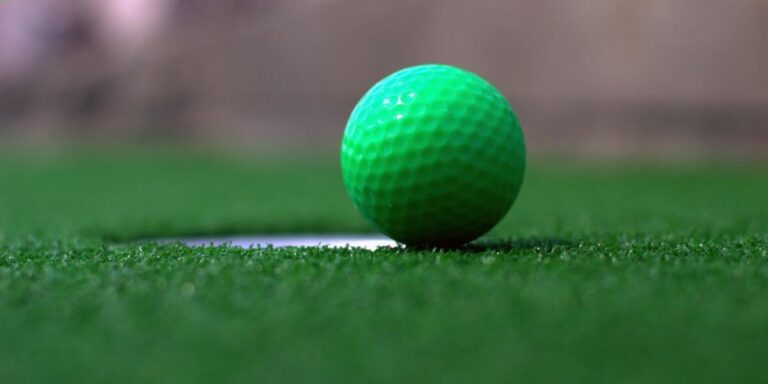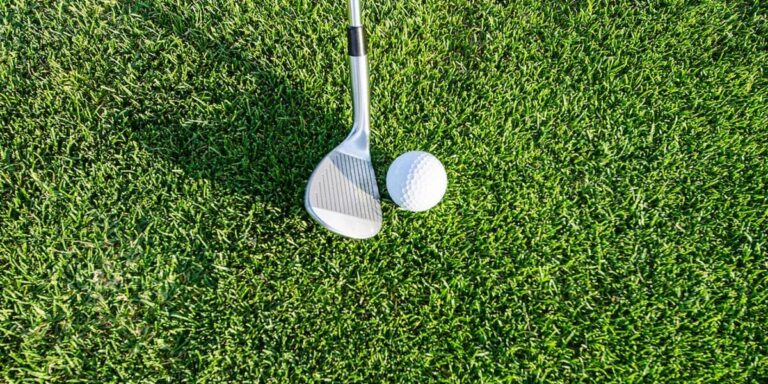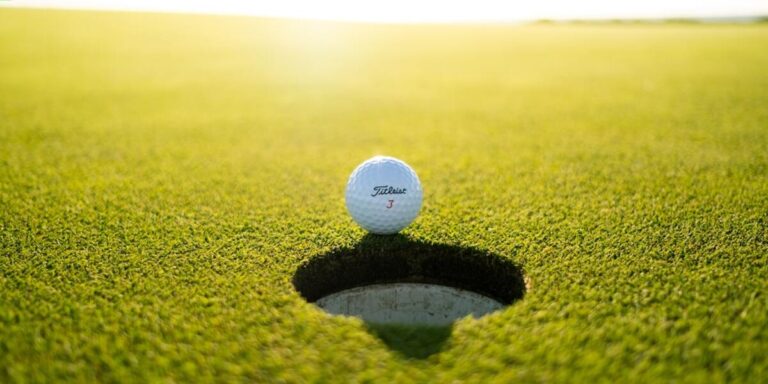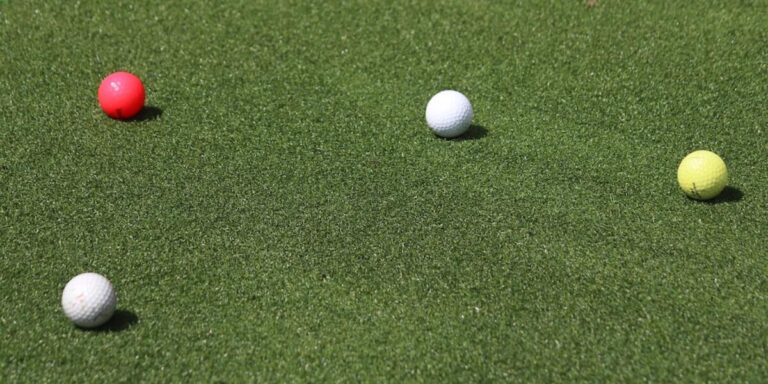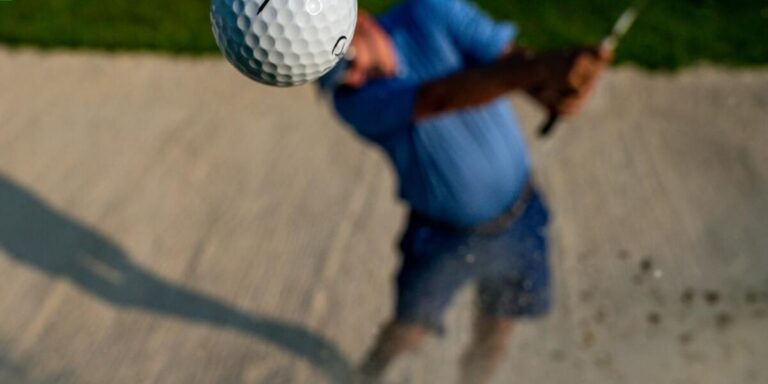How many dimples are on a golf ball?
Inside of a golf ball, there are plenty of dimples. Golf balls have anywhere from 300 to 500 dimples on their surface. The dimples help reduce drag on the ball as it flies through the air, which makes it go further. If you’re looking for more distance off the tee, try a golf ball with more dimples.
The Benefits of Dimples on a Golf Ball
1. Many golfers don’t realize the important role that dimples play in the game of golf. Dimples on a golf ball help to reduce drag and increase lift, which leads to longer, straighter drives.
2. Dimples also help to keep the ball in the air for a longer period of time, which is ideal for those approach shots into the green. The added spin that dimples create also helps control your shot direction and trajectory.
3. So next time you’re out on the course, remember that those little dimples on your golf ball are there for a reason – to help you improve your game! Thanks for reading and please share this blog with fellow golfers if you found it helpful.”
How Dimples Can Help Your Golf Game
Golfers often ask how dimples on a golf ball can help their game. The answer lies in the physics of flight. A dimpled ball has less air resistance than a smooth one, so it flies farther and straighter. That’s why many professional golfers use dimpled balls.
The indentations on a golf ball cause the boundary layer of air around the ball to turbulence as it spins through the air. This increased turbulence reduces drag force, allowing the ball to fly further with less spin. In fact, studies have shown that a dimpled Golf Ball can travel up to 5% further than its non-dimpled counterpart!
So if you’re looking for more distance off the tee, try using a dimpled golf ball next time you hit the links!
What Do Dimples Do for a Golf Ball?
A golf ball’s dimples create a thin layer of turbulent air around the ball, reducing drag and allowing it to travel further. When hit with a club, the dimples help spin the ball which in turn gives it more lift and keeps It from slicing or hooking. The shape of the dimples also helps keep the ball stable in flight.
How Many Dimples Are There on a Regulation Golf Ball?
A regulation golf ball must have between 336 and 432 dimples, evenly distributed across its surface. The precise number of dimples varies from manufacturer to manufacturer; however, the average is approximately 370.
The purpose of the dimples is to create turbulence in the airflow around the ball, which results in a decrease in drag force and an increase in lift force. This enables the ball to travel further through the air than it would if it were smooth.
Dimpled balls were first introduced during the late 19th century, and they quickly became popular because they performed noticeably better than their predecessors. Today, nearly all golf balls on the market are dimpled.
Why are there dimples on golf balls?
There are many theories out there as to why golf balls have dimples, but the most likely explanation is that they help to reduce drag. When a ball is hit, it spins and creates a pocket of air around it which helps to propel it forward. However, this also causes drag on the ball which can slow it down. Dimples help to break up this pocket of air and reduce drag, allowing the ball to travel further.
So why not just make all golf balls completely smooth? It turns out that dimples actually create more lift than a smooth surface does. This is because when the dimples disrupt the flow of air around the ball, they create tiny turbulence which helps to push the ball up into the air. By creating more lift, dimples also help keep the ball from dipping too much and keeps its trajectory more consistent.
Finally,dimples also serve as “ fingerprints” for each golfer . Every golfer has their own unique swing which imparts different spin rates and trajectories on their shots. The pattern of dimples on a golfball can help identify these characteristics and allow players to choose a ball that suit their game best . So next time you’re teeing off , take a closer look at your trusty golf companion – those little dimpled spheres may be small , but they sure do pack a punch!
Do different brands of golf balls have different numbers of dimples?
1. Do different brands of golf balls have different numbers of dimples?
Just like with anything else, there are variations from one brand to another when it comes to the number of dimples on a golf ball. It’s not uncommon for a player to notice that one type of ball seems to fly further than another, and often times this can be attributed to the difference in dimple count. If you’re looking for more distance off the tee, doing some research on which brand has more dimples could be a good place to start.
2. How does the number of dimples affect performance?
Contrary to popular belief, Thedimple patternon a golf ball doesn’t existto create turbulence inthe air aroundtheball (that would actually slow it down). Rather, they help keep theball smoothand round asit spins throughtheair – givingyou better control over its trajectory. A greaternumberof dimplesmeans agreatersurface areafor those all-important liftandspin forcesSo if you want your shots tomaintain moremomentum andcarry further, lookfor a higherdimplecount nexttimeyou’re at thenearbypro shop!
How do the dimple patterns affect the flight of the ball?
How do the dimple patterns affect the flight of the ball?
The dimple pattern on a golf ball has a big impact on its flight. The dimples help to create turbulence in the air around the ball, which gives it more lift and less drag. This helps the ball to fly farther and straighter. There are many differentdimple patterns that have been designed, and each one will give the ball slightly different performance characteristics.
Frequently Asked Question
-
How many dimples are on a golf ball?
-
What is the core of a golf ball?
-
What is inside leather ball?
-
What is a hard ball made of?
-
How much does a season ball cost?
-
What’s in the inside of a golf ball?
-
Do golf balls have liquid centers?
-
Do golf balls float?
-
Why do golf balls bounce so high?
-
Why does the red ball swing more?
-
Why do golf balls have dimples?
-
Is a golf ball hollow on the inside?
-
How deep is a golf hole?
-
Is the inside of a golf ball poisonous to dogs?
-
Why do golf balls have a rubber core?
Modern golf balls are approximately 300500 in dimples. However, there have been some balls that have more than 1,000 dimples. Record holder: A ball that had 1,070 dimples in four sizes and six56 pinhead-sized.
A golf ball’s core is rubber. The rubber is covered by plastic (a thermoplastic resin known as Surlyn) or with urethane which is an artificial crystal compound also used for pesticides. The design of the golf ball will be different.
A cricket ball, in its most basic form, is composed of layers of twine wrapped around a core made out cork. It’s enclosed within a red leather shell.
What exactly is a cricket bat made from? The core of a cricket ball is made from cork and then it’s covered with yarn. The ball is then covered with a leather case, and the seams around the center are sewn. Finally, the balls are coated in a hard lacquer.
Amazon. Amazon.
A golf ball today is made from a rubber core of butadiene, with one or more rubber mantles surrounding it. The tough skin on the top completes the package.
Wound golf balls consist of golf balls where rubber thread is wrapped around one of two types of cores. A liquid center is when the core has a liquid-filled core; or a center that is solid and made from synthetic rubber. The golf balls that have been wound are wrapped in a surlyn or balata cover.
The balls that you use to play golf sink due to their higher density than the water. The fake golf balls, which you can use on a mini-golf course, float due to their hollowness and therefore less dense than what they’re floating in.
Why do golf balls bounce so high on concrete? Concrete can deform a golf ball slightly, creating elastic force. The golf ball stores energy by deforming and then bounces back.
The red ball can swing harder and reverse its swing as it gets older. The red ball is a help to the bowlers because they must negotiate the first overs swing unlike with the white ball, in which you are attacked by the batsman.
A golf ball with dimples creates a turbulent layer of air around the surface. The smooth flowing air can follow the surface of the golf ball a bit further around its backside, decreasing the volume of the wake.
Many have solid interiors including the Spalding Ball from 1967. The solid rubber core is hidden within the dimpled, white ball. It has a low-spin surlyn cover.
According to the Rules of Golf, a hole should be at least 4.25 inches wide and 4 inches deep. Holes are cleaned regularly, and often every morning before the first tee.
Golf balls pose a danger to dogs regardless of their size. For larger dogs, golf balls can be choking hazards. Your dog can also be hurt by golf balls that contain harmful materials. Additionally, broken pieces could cause damage to the stomach or intestinal linings, and fiberglass can also damage your teeth.
This soft rubber material allows for the ball to stay on the clubface longer, which helps to reduce spin and improve feel. The outer core, which conceals the inner core, is made of stiffer and more durable rubber. This helps to reduce spin especially at the bag’s top.
Conclusion
The search for the perfect golf ball is a never-ending quest. But how many dimples are on a golf ball? The answer, as it turns out, is inside of a golf ball. That’s right, there are nodimples on the outside of a golf ball. So if you’re looking for that perfect sphere of dimpled goodness, you’ll have to look inside of a golf ball.


